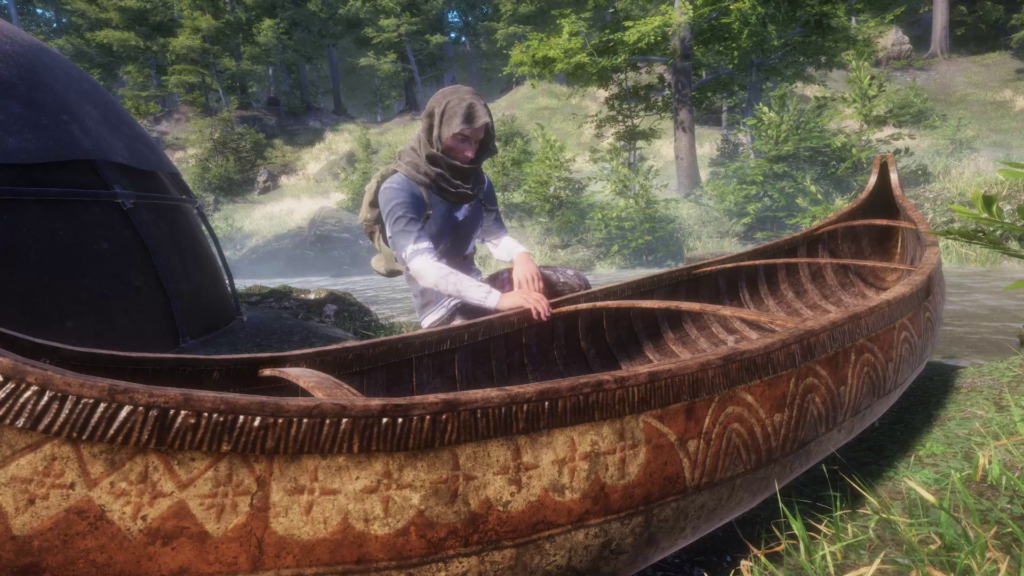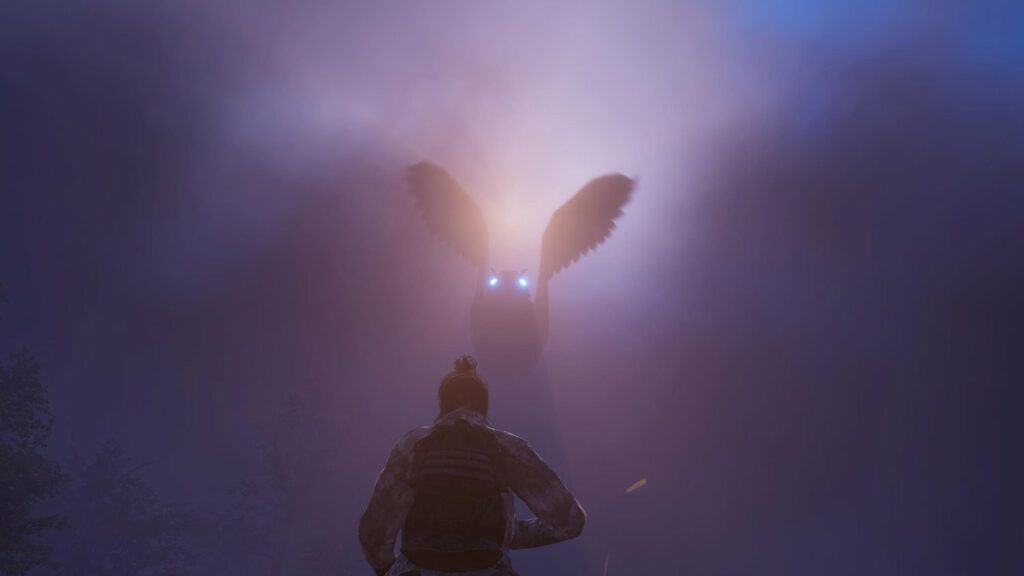
La version française suit la version anglaise.
A York University-funded project to develop an Indigenized curriculum and create experiential education opportunities has joined the UNESCO organization to promote and protect endangered Indigenous languages.
Funded by York’s Academic Innovation Fund (AIF), Biskaabiiyaang: The Indigenous Metaverse has joined the global community for UNESCO’s International Decade of Indigenous Languages (IDIL) 2022-2032.

Biskaabiiyaang joins 1,400 associated organizations working together to promote and protect Indigenous languages. The project, which received $40,000 in funding through the AIF, will design an Indigenous-led metaverse delivering Anishinaabe language and First Nation cultural competency programs within a virtual world.
Professor Maya Chacaby, a Sociology Department faculty member at York University’s Glendon Campus, is the project lead and Biskaabiiyaang’s chief visionary.
As part of the IDIL, Biskaabiiyaang will share and exchange Anishinaabemowin (Ojibwe language) resources and contribute to a growing community of action for Indigenous languages. It will also share stories, tools, and research into metaverse learning as the project develops, produced by its network of First Nation Elders, Anishinaabe community members, the Indigenous Youth Council, and its partners Nokiiwin Tribal Council, York University and UniVirtual.
“We highly value the opportunity to further our knowledge of Indigenous languages and issues through connecting with the global community,” says Chacaby.
William Prensky, the founder and chairman of the board for UniVirtual, the company building Biskaabiiyaang in the metaverse, says, “Since work began on Biskaabiiyaang, it has been an honour to listen to the Anishinaabe community, not only to learn what they know but also how they feel.

“Connecting with Indigenous communities on a global scale through the UNESCO platform is a wonderful opportunity for our project, its partners, and for our team members as individuals; through learning and listening to Indigenous voices working for change, our worlds, both virtual and real, will be better for it. The centuries of Indigenous experience are vital if we are to survive, after having ignored those voices for far too long.”
The IDIL’s Global Action Plan provides a strategic framework for its community – from UN-system entities, national governments, Indigenous peoples’ organizations, civil society and academia, to the private sector. Biskaabiiyaang supports the Global Action Plan by providing a sustainable, lifelong learning environment that will archive, safeguard, and revitalize Anishinaabemowin. Indigenous and non-Indigenous Peoples will be able to access Biskaabiiyaang as part of their formal or non-formal education at any time, regardless of geographical location.
Further in line with the Global Action Plan, Biskaabiiyaang’s process and vision recognizes and respects Indigenous knowledge. Through systems of digital empowerment, Indigenous communities are contributing their expertise to programs in Indigenous knowledge, histories, language, sciences and philosophies.
Through the IDIL community and over the following decade, Biskaabiiyaang aims not only towards the resurgence of Anishinaabemowin but of all Indigenous communities and languages across the world.
To learn more, visit www.biskaabiiyaang.com.
Le projet Indigenous Metaverse se joint à la campagne de l’UNESCO pour la promotion et la protection des langues autochtones
Ce projet financé par l’Université York vise à élaborer un programme d’études autochtones et à créer des possibilités d’éducation expérientielle. Il s’est joint à l’UNESCO pour promouvoir et protéger les langues autochtones en péril.
Financé par le Fonds d’innovation académique (AIF) de York, Biskaabiiyaang: The Indigenous Metaverse a rejoint la communauté mondiale pour la Décennie internationale des langues autochtones (DILA) 2022-2032 de l’UNESCO.
Biskaabiiyaang rejoint les 1 400 organisations associées qui travaillent ensemble pour promouvoir et protéger les langues autochtones. Le projet, qui a bénéficié d’un financement de 40 000 dollars de l’AIF, vise à concevoir un méta-univers dirigé par des Autochtones qui propose des programmes de compétences culturelles des Premières Nations en anishinaabemowin.
La professeure Maya Chacaby, membre du corps professoral du Département de sociologie du campus Glendon de l’Université York, dirige le projet Biskaabiiyaang et en est la chef visionnaire.
Dans le cadre de la DILA, Biskaabiiyaang partagera et échangera des ressources en langue anishinaabemowin (ojibwé) et contribuera à une communauté d’action croissante pour les langues autochtones. Le projet partagera également des récits, des outils et des recherches sur l’apprentissage au moyen d’un méta-univers au fur et à mesure de son développement, qui sont produits par son réseau d’Aînés des Premières nations, de membres de la communauté anishinaabe, du Conseil des jeunes Autochtones et de ses partenaires, le Conseil tribal Nokiiwin, l’Université York et UniVirtual.
« Nous savons gré de cette possibilité d’approfondir notre connaissance des langues et des questions autochtones en nous connectant à la communauté mondiale », déclare Mme Chacaby.
William Prensky, fondateur et président du conseil d’administration d’UniVirtual, la société qui construit le méta-univers de Biskaabiiyaang confie : « Depuis que nous avons commencé à travailler sur Biskaabiiyaang, nous sommes honorés d’écouter la communauté anishinaabe, non seulement pour apprendre ce qu’elle sait, mais aussi ce qu’elle ressent.
« La connexion avec les communautés autochtones à l’échelle mondiale grâce à la plateforme de l’UNESCO est merveilleuse pour notre projet, pour ses partenaires et pour les membres de notre équipe à titre individuel; en apprenant et en écoutant les voix autochtones qui œuvrent pour le changement, nos mondes, tant virtuels que réels, s’en trouvent rehaussés. » Les siècles d’expérience des Autochtones sont essentiels si nous voulons survivre, après avoir ignoré ces voix pendant bien trop longtemps. »
Le plan d’action mondial de la DILA fournit un cadre stratégique à sa communauté qui va des entités du système des Nations Unies, des gouvernements nationaux, des organisations de peuples autochtones, de la société civile et du monde universitaire jusqu’au secteur privé. Biskaabiiyaang appuie le plan d’action mondial en fournissant un environnement d’apprentissage durable qui archivera, sauvegardera et revitalisera l’anishinaabemowin. Les peuples autochtones et non autochtones pourront accéder à Biskaabiiyaang dans le cadre de leur éducation formelle ou non formelle à tout moment, indépendamment de leur emplacement géographique.
Toujours en accord avec le plan d’action mondial, le processus et la vision de Biskaabiiyaang reconnaissent et respectent les connaissances autochtones. Grâce à des systèmes d’autonomisation numérique, les communautés autochtones apportent leur expertise aux programmes relatifs aux connaissances, à l’histoire, aux langues, aux sciences et aux philosophies autochtones.
Par le biais de la communauté de la DILA et au cours de la décennie suivante, Biskaabiiyaang vise non seulement la résurgence de l’anishinaabemowin, mais aussi celle de toutes les communautés et langues autochtones à travers le monde.
Pour en savoir plus, consultez le site www.biskaabiiyaang.com.
